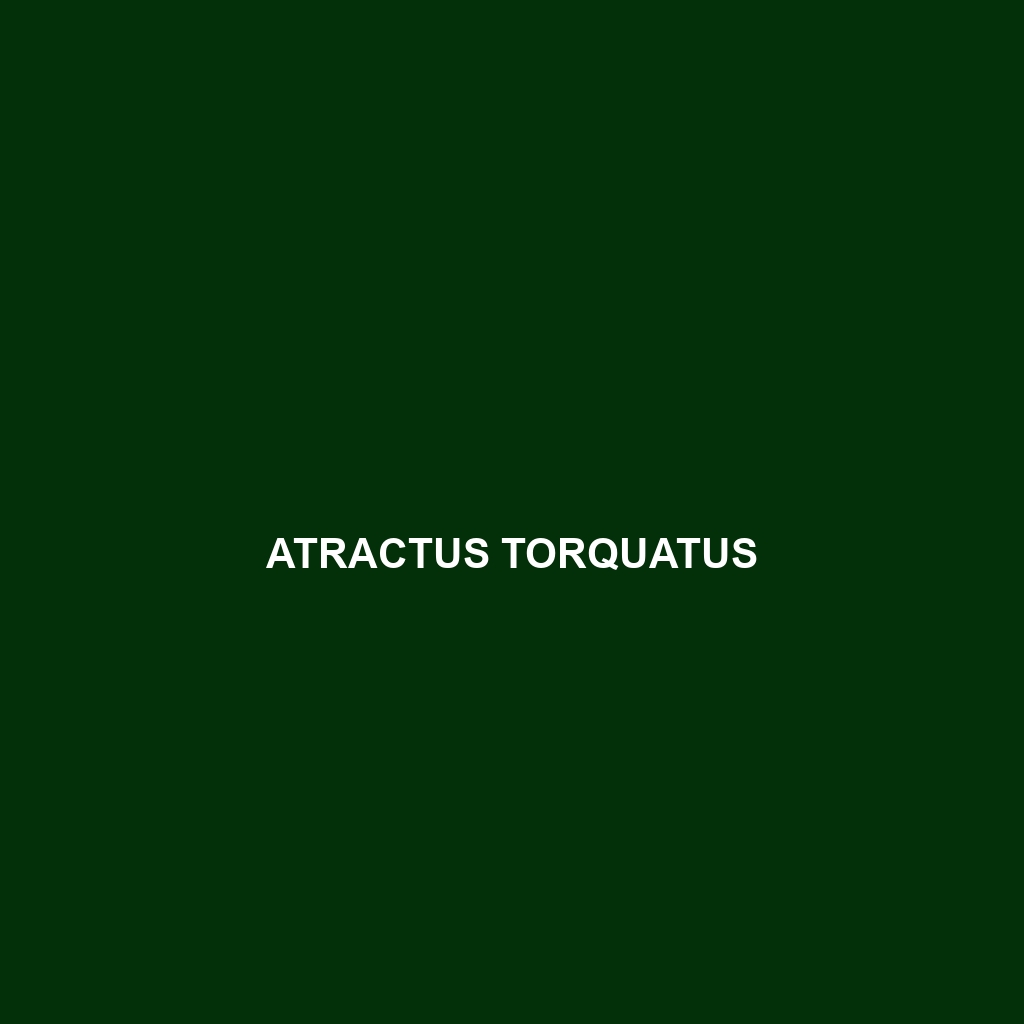Species Description: Atractus torquatus
Common Name: Atractus torquatus
Scientific Name: Atractus torquatus
Habitat
Atractus torquatus is primarily found in tropical and subtropical regions of Central and South America. This species is commonly observed in the dense, humid rainforests of countries such as Colombia, Ecuador, and Peru. Atractus torquatus prefers environments with sufficient cover, such as leaf litter and underbrush, which provide protection and hunting grounds. These snakes are often spotted near streams and rivers, taking advantage of the moist conditions associated with these ecosystems.
Physical Characteristics
Atractus torquatus typically reaches lengths of 40 to 60 centimeters, with some individuals growing larger. This snake is characterized by its slender, elongated body which features a distinct coloration; the dorsal side is often a glossy black or dark brown, adorned with pale yellow or white bands. These bands may vary in width, creating a striking contrast that aids in camouflage among leaf litter. Its smooth, shiny scales and small, rounded head further differentiate it from similar snake species.
Behavior
This species is primarily nocturnal, becoming active at night when it hunts for prey. Atractus torquatus is known for its secretive nature and is rarely seen basking in open areas. It tends to stay hidden under debris or in burrows during the day, which helps it avoid predators. Their behavior includes a burrowing habit, allowing them to navigate through soil and leaf litter effectively.
Diet
Atractus torquatus is an opportunistic feeder that primarily preys on small invertebrates, including earthworms, insects, and other small creatures it encounters in its habitat. It plays a crucial role in controlling the population of these organisms, maintaining ecological balance. Their feeding habits are adapted for a diet rich in organic material found within the forest floor.
Reproduction
The reproductive habits of Atractus torquatus involve oviparous breeding, with females typically laying clutches of 4 to 10 eggs during the humid season. Breeding often occurs in the late wet season, ensuring that offspring are born when conditions are optimal for survival. The eggs incubate in moist environments for about 60 to 70 days before hatching. The young snakes emerge fully formed and are independent immediately after birth.
Conservation Status
Currently, Atractus torquatus is classified as vulnerable due to habitat destruction and fragmentation caused by human activities such as deforestation and agricultural expansion. Conservation efforts are essential to protect this species and its natural habitat from further decline.
Interesting Facts
One fascinating aspect of Atractus torquatus is its ability to blend seamlessly into its environment, which aids in both hunting and avoiding predators. This species has also been noted for its unique defense mechanism: when threatened, it may emit a strong-smelling musk to deter potential threats.
Role in Ecosystem
Atractus torquatus plays a vital role in its ecosystem as a predator of invertebrates, contributing to biodiversity and the health of the forest floor. By controlling pest populations and serving as prey for larger predators, such as birds and mammals, Atractus torquatus is an integral component of its native ecosystem.
